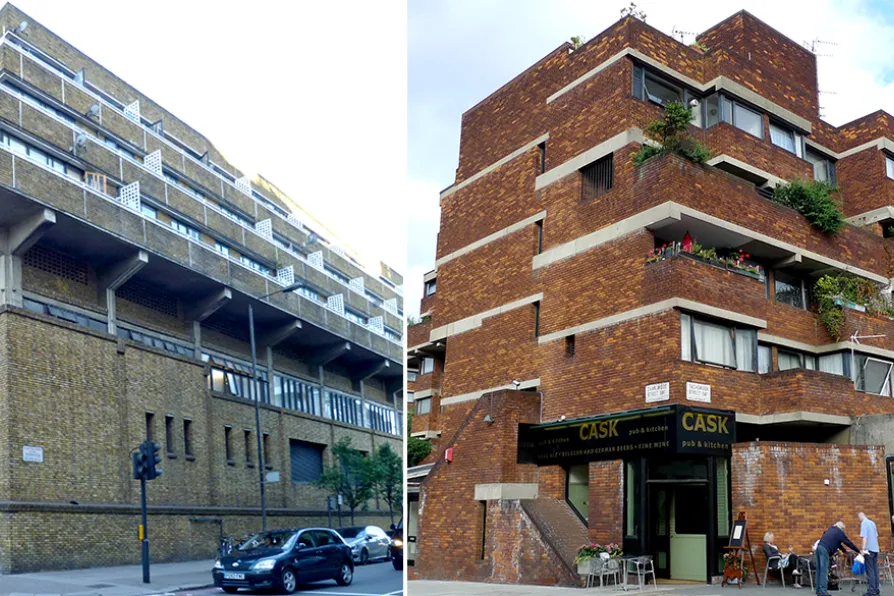MARIA DUARTE picks the best and worst of a crowded year of films
A capital vision
London has been a pioneer in council housing, radical local democracy and multiculturalism and a new book persuasively argues that it can be so again, says GLYN ROBBINS

 (L to R) Warwick Road (Kensington) Estate saved from ‘redevelopment’ or demolition by a certificate of immunity, July 2015; Lillington Gardens a former council housing estate in Westminster is now owned and managed by CityWest Homes
[(Left) Philafrenzy and (right) Ewan Munro both Creative Commons]
(L to R) Warwick Road (Kensington) Estate saved from ‘redevelopment’ or demolition by a certificate of immunity, July 2015; Lillington Gardens a former council housing estate in Westminster is now owned and managed by CityWest Homes
[(Left) Philafrenzy and (right) Ewan Munro both Creative Commons]
Red Metropolis: Socialism and the Government of London
by Owen Hatherley
(Repeater Books, £10.99)
FOR anyone who’s lived in London during the last 50 years — and especially if you’ve taken an interest in its politics — Owen Hatherley’s book is unputdownable. He knows his stuff and writes so fluently that he’s made what could be a very dry subject into a page-turner.
A book about much more than the title suggests, it’s also an attempt to understand the Labour Party’s crushing December 2019 defeat and suggest some ways for the left to reform, in part inspired by London’s radical tradition.
Similar stories

Peter Mitchell's photography reveals a poetic relationship with Leeds

Ben Cowles speaks with IAN ‘TREE’ ROBINSON and ANDY DAVIES, two of the string pullers behind the Manchester Punk Festival, ahead of its 10th year show later this month

In an exhibition of the graphic art of Lorna Miller, MATT KERR takes a lungful of the oxygen of dissent

The Morning Star sorts the good eggs from the rotten scoundrels of the year











